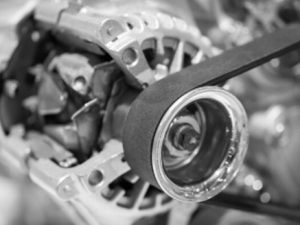Contents
- Introduction to Timing Belts and Chains
- When to Change Timing Belts and Chains
- How to Change Timing Belts and Chains
- What to Pay Attention To
- Conclusion
Introduction to Timing Belts and Chains

Timing belts and chains are crucial components of an internal combustion engine. They synchronize the rotation of the crankshaft and camshaft, ensuring that engine valves open and close at the right times during each cylinder’s intake and exhaust strokes. A failing timing belt or chain can cause significant engine damage, so understanding their maintenance and replacement is essential. buy timing belts and chains.
When to Change Timing Belts and Chains
The timing belt or chain replacement interval depends on the vehicle make, model, and engine type. Typically, timing belts need replacing every 60,000 to 100,000 miles, while chains often last longer but are subject to wear and tension around the same mileage. Always consult the vehicle’s owner manual for specific recommendations.
Comparison Table: Timing Belts vs. Timing Chains
| Feature | Timing Belt | Timing Chain |
|---|---|---|
| Material | Rubber with high-tensile fibers | Metal |
| Longevity | 60,000 – 100,000 miles | 100,000 – 150,000 miles or more |
| Noise | Quieter | Louder |
| Cost of Replacement | Lower | Higher |
| Risk of Failure | Can snap without warning | Seldom fails, more gradual wear |
How to Change Timing Belts and Chains
Changing a timing belt or timing chain is a complex procedure that often requires professional expertise. Here is a general guide:
Steps to Replace a Timing Belt
- Remove engine accessories: Disconnect battery, and remove parts like the serpentine belt.
- Access the timing cover: Often requires removing engine covers and sometimes parts of the engine.
- Align the engine: Rotate the engine to top dead center to align timing marks.
- Remove the old belt: Loosen tensioners and carefully remove the belt.
- Install the new belt: Place on sprockets and apply proper tension.
- Reassemble: Put back all removed parts and check for proper operation.
Steps to Replace a Timing Chain

- Drain fluids: Elevate the car safely and remove engine oil.
- Access the chain: Remove components like valve cover, timing cover, and gears.
- Compare old and new chains: Ensure the new chain matches dimensions.
- Install the new chain: Place it on gears and set to manufacturer tension specifications.
- Reassemble: Reverse disassembly steps and ensure correct engine function.
What to Pay Attention To
While replacing timing belts or chains, it’s important to pay attention to these points:
- Tensioner and Pulley Inspection: Always inspect and replace worn-out tensioners and pulleys.
- Proper Tools: Use appropriate tools for detaching and reattaching components to avoid damage.
- Verify Timing Alignment: Ensure alignment marks are perfectly matched to prevent engine malfunction.
- Engine Operation: After assembly, start the engine to check for abnormalities before extensive use.
Maintenance Checklist
| Component | Frequency | Action |
|---|---|---|
| Timing Belt | 60,000 – 100,000 miles | Replace |
| Timing Chain | 150,000 miles (inspect) | Inspect / Replace |
| Tensioner | With belt/chain replacement | Inspect / Replace |
| Pulleys | With belt/chain replacement | Inspect / Replace |
Conclusion
Proper maintenance of timing belts and chains is vital for vehicle performance and longevity. By paying attention to the recommended replacement intervals and proper installation techniques, car owners can avoid costly engine damage. For a wide selection of reliable parts, consider visiting buy timing belts and chains from trusted suppliers.